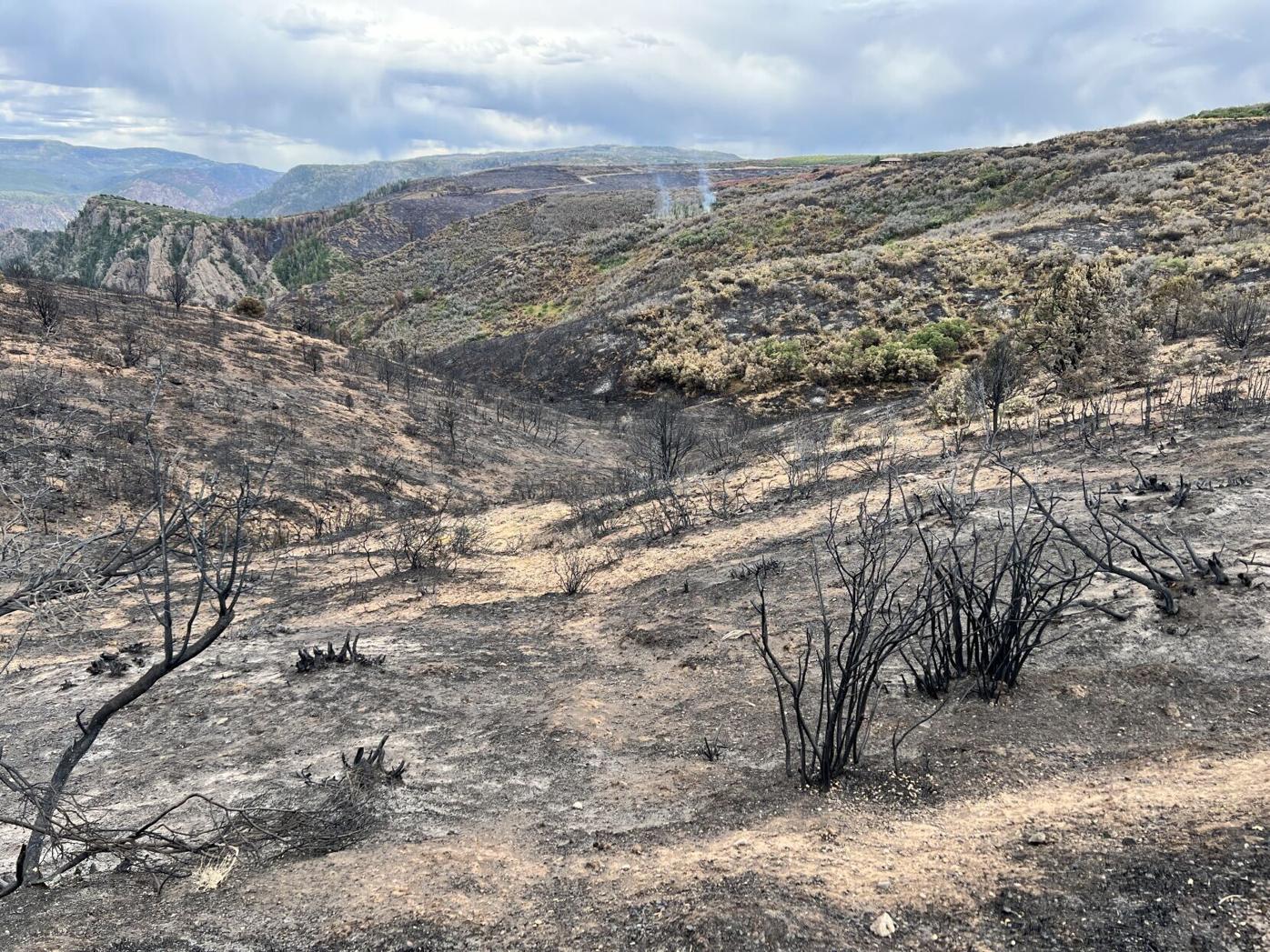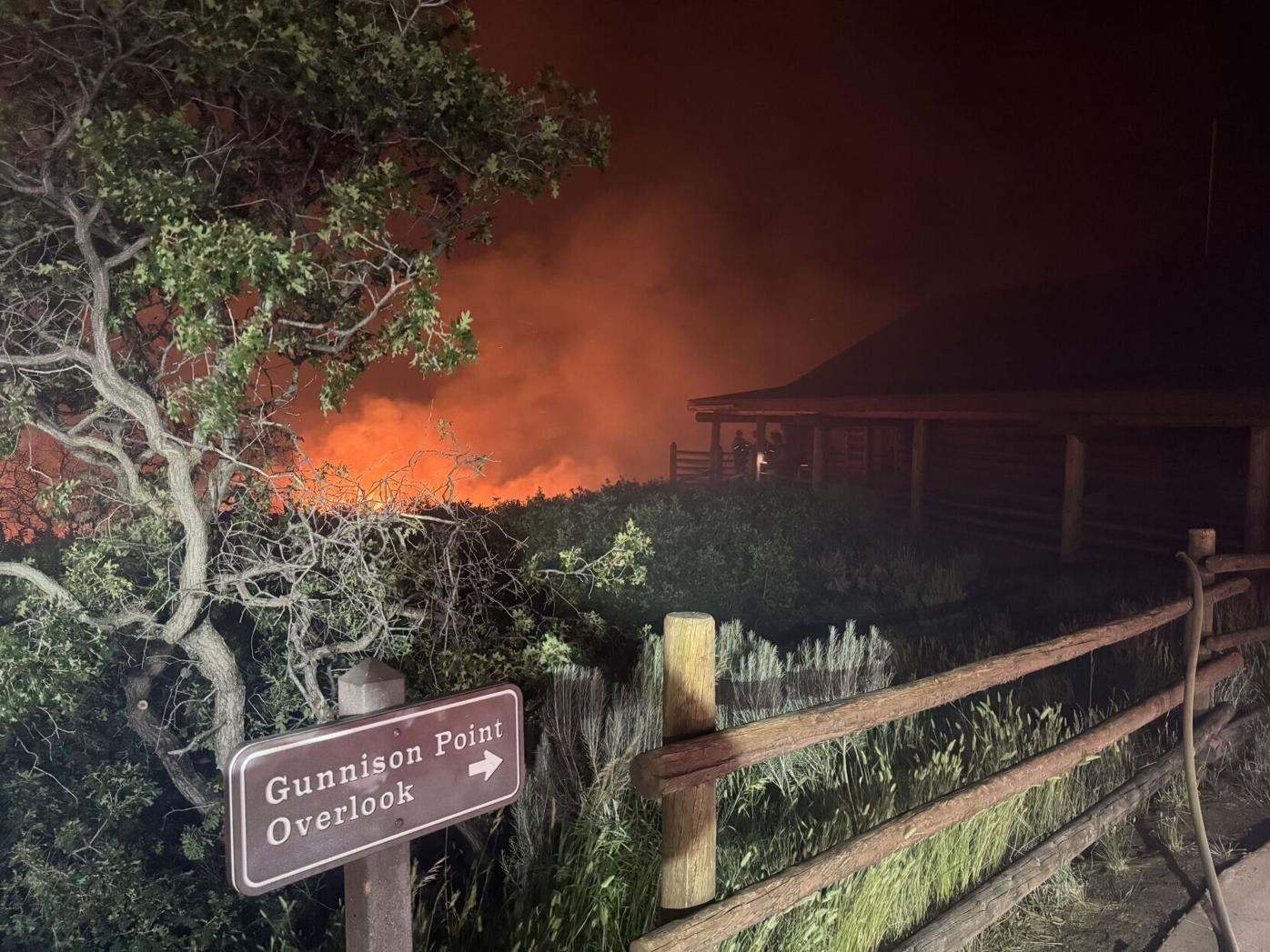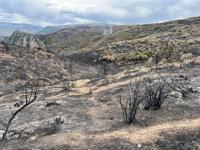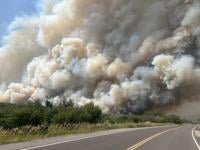Black Canyon of the Gunnison National Park reopens as fire smolders on
The north rim of the Black Canyon of the Gunnison National Park reopened Wednesday as firefighters mopped up a fire that charred more than 4,000 acres along the south rim.
Lightning sparked the fire in the park July 10 and by the end of the day it had consumed 1,640 acres and burned several structures, including a maintenance shop.
When Joe White arrived to lead the medical unit of the Type 1 Rocky Mountain Complex Incident Management Team a few days later, it had burned around 2,000 acres and firefighters were faced with hot, dry conditions and wind gusts up to 35 mph. The team also had trouble getting all the resources needed to fight the fire because of competing fires all across the West, said White, who also works as the fire science program director at Colorado Mesa University.
The fire burned so hot across the landscape dotted with piñon and juniper trees, it created a “moonscape” where plants will have a tough time getting reestablished because of the damage to the soil, White said.
Across the Western Slope, White said he has seen similar fires such as the 2020 Pine Gulch fire burn through piñon and juniper forest in a similar way and cause damage that is still stark.
“A lot of that vegetation has not come back,” White said, describing the Pine Gulch burn scar, the largest in state history.
It’s likely a problem that will continue as fires burn across the dry Western Slope where piñon-juniper forests are common.
Despite the intensity of the South Rim fire, firefighters had some clear wins, safely evacuating all park visitors and staff on the first day and saving structures such as the visitors center, said Niki Carpenter, a spokeswoman with the Type 3 Incident Management Team currently overseeing the fire.

Smoke rises from the South Rim fire on Tuesday, July 29, 2025. It was visible from Tomichi Point within the Black Canyon of the Gunnison National Park.
Courtesy of Niki Carpenter

Smoke rises from the South Rim fire on Tuesday, July 29, 2025. It was visible from Tomichi Point within the Black Canyon of the Gunnison National Park.
Firefighters were also able to use control burns to help protect Morrow Point Dam, a structure nearly 470 feet high in the canyon, White said. The fire crews that came from all across the nation also helped save numerous homes. Ground crews were aided by air tankers, dropping retardant, Carpenter said.
On Wednesday, firefighters were focused on extending the containment of the fire beyond 52% by putting in a line to keep the fire from expanding through a steep, sensitive drainage that requires specialized tactics to minimize impact to the landscape, explained Carpenter. Crews were using chain saws in the area to cut large pieces of wood still holding heat and dumping water on them, she said.
Over the last few days, weather has also helped moderate the fire and the risk of fire spreading outside of the existing burn area was low, Carpenter said.
A Burned Area Emergency Response team is now on-site assessing the damage, she said, and the members will make recommendations for restorations such as reseeding or mulching.
Some of the severely burned areas will be visible to visitors, but there are mosaic areas where the fire left behind unburned areas that will help reseed the landscape, Carpenter said. The scar could offer an opportunity to teach guests about fire ecology and restoration.
“There is a lot of opportunity for the park to evolve out of this,” she said.

Smoke billows from the South Rim fire the day it broke out on July 10.
Courtesy of Black Canyon of the Gunnison National Park

Smoke billows from the South Rim fire the day it broke out on July 10.
White said he expects the fire danger to remain high across western Colorado as conditions remain hot and dry likely through August. Across the Grand Mesa many dead and downed trees also remain following beetle outbreaks and pose a serious fire risk, he said.
The risk has been highlighted lately by vehicles causing small spot fires along Interstate 70, White said.
He encouraged all visitors to the Western Slope to be aware of the risk and to be sure if they are allowed to light a campfire, it is fully extinguished when they leave.
The National Park Service has provided more information about the South Rim fire on a dedicated site complete with video and maps.
Contact the writer at mary.shinn@gazette.com or (719) 429-9264.







